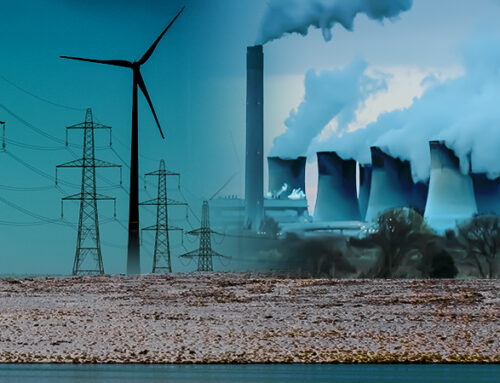As the country largely remains locked down, electricity demand continues to be low, and renewable generation high, particularly in the current sunny weather. This is creating challenges for National Grid ESO in balancing the electricity system, and so it is introducing new tools to increase what is known as “footroom”.

“Footroom” is the term used to refer to low-demand scenarios. Typically in the summer, there is a natural decline in demand as there is less need for heating and lighting, alongside an increase in solar generation. This is complicated by the fact that most solar generation is connected at the distribution level meaning that NG ESO does not have direct visibility of it. This summer, the effect is exaggerated by the fall in demand due to the pandemic. The daily shape of domestic demand is also changing as consumer habits in lockdown are different.

 New balancing services introduced
New balancing services introduced
To address these issues, NG ESO has introduced two new measures: the “Last resort disconnection of Embedded Generation” (Grid Code Modification 143) and the new Optional Downward Flexibility Management (“ODFM”) scheme.
The OFDM service allows NG ESO the ability to control output from providers that are not currently accessed through either the Balancing Mechanism or existing Ancillary Services. Eligible participants must be capable of sustaining service delivery (ie continuing reduction of export to the grid, or increase in site demand) for a minimum of 3 consecutive hours, and must be 1 MW or larger (which may be through aggregation of separate assets behind the same Grid Supply Point).
Demand for the service will vary, but up to 3,000 MW of net demand reduction will be required each time ODFM is triggered. Generators must be able to curtail completely and must not be participating in an active network management scheme with their Distribution Network Operator (“DNO”).
The term of the service is from 8 May to 31 August, with an option to extend to 30 September, and the primary delivery window is 23:00 – 07:00 Saturday through to Monday (although the service may be activated outside these core hours if needed).
According to NG ESO, more than 2.4 GW of capacity from 170 smaller generators has been signed-up to the service, including 1.5 GW of wind, 700 MW of solar and almost 100 MW of demand turn-up.
The “Last resort disconnection of Embedded Generation” provision, which was urgently approved by Ofgem on 7 May allows NG ESO to instruct a DNO to disconnect embedded generators connected to its system under emergency conditions and as a last resort. This would only be possible once demand reduction through the Balancing Mechanism and other commercial means had been exhausted. Embedded generators subject to such a disconnection would not receive any financially compensation, so are encouraged, where possible, to participate in the ODFM service to ensure they secure revenues for any reduction in output. This capability will remain in effect until 25 October 2020.
The requirement to exhaust all commercial options before implementing emergency disconnection of embedded generation, the system operator may well end up paying a premium for ODFM services. This could mean that not only will generators be able to cover any loss of income from reducing their output, but may well earn more than they would have done if running normally.
These measures were implemented on 7 May, ahead of the first May bank holiday weekend where demand was forecast to be particularly low. Although it appears that no embedded generation was disconnected over that weekend, the OFDM service was called upon, and delivered a reduction of around 238 MW, primarily through the curtailment of wind generation.
“The ODFM undoubtedly presents a revenue opportunity for a number of embedded generators and storage asset owners who previously did not have the ability to access such markets (as they will generally not be parties to the balancing mechanism). However, this potential opportunity needs to be considered in light of existing commitments/restrictions both operationally and contractually, for example in relation to any power purchase agreement obligations to maximise output. This may mean that the scheme is more easily accessible for aggregators or generators who benefit from flexible merchant PPAs or route to market arrangements within their own group, “
– Simon Davies, Principal Associate, Evershed Sutherland
As expected, the ODFM was called again over the second bank holiday weekend in May. Ahead of the weekend, NG ESO had expected overnight demand to fall as low as 13.8 GW, with potenitally large contributions from distribution-connected solar during the day-times.

In the event, demand was significantly lower than over the same period last year, and the ODFM service was called upon 3 times, as shown below:

NG ESO also entered into an arrangement with EDF to reduce the output of its Sizewell B nuclear plant, agreeing a one-off fixed contract rather than using the Balancing Mechanism, possibly due to the inflexible nature of high capacity nuclear power stations.
Consumer bills set to rise as balancing costs grow…
Most people would think that and excess of supply over demand would result in lower prices for consumers, and indeed, with most commodities that would be the case. However, with electricity, the over-riding need to balance supply and demand in order to maintain security of supply means that the current low demand / high renewables scenario is likely to push prices up as a result of increased balancing costs.

NG ESO expects that its balancing costs for the period May-August 2020 will be almost 2.5 times higher than for the same period last year, but points out that without the introduction of these new services, the costs would likely have been around 3.1 times higher. This significant increase will be passed to transmission system users in the Balancing Services Use of System (“BSUoS”) cost, which ultimately feeds through to consumer bills.
With many consumers currently struggling to pay their bills, both in the domestic and industrial/commercial segments, this is bad news for suppliers, many of whom are finding the current environment even more challenging than usual.
With this in mind, SSE has submitted a request to NG ESO to defer these additional BSUoS payments by spreading them across the settlement periods during 2021/22 to allow suppliers and generators to manage the unexpected increase in charges. This request would put the funding burden onto National Grid, a cost that quite likely would also be passed on to consumers eventually.
…pointing to a lower carbon/higher cost future
The lockdown is beginning to be relaxed, and with schools and businesses starting to re-open, demand is set to increase over the coming weeks and months, and may recover to “normal” levels by the winter. Some commentators have suggested that the lockdown has shown the way to a new, lower-carbon future, with demand met by high levels of renewables, and National Grid’s new service innovations are a step towards that.
But there are problems with this view. Even in a low-demand scenario with plenty of renewables available, the system cannot cope without thermal generation – CCGTs are running while wind is curtailed (as described in this recent NG ESO webinar), in the winter, coal still contributes to around 10% of demand on some days, and as noted above, the costs of balancing in these conditions are significantly higher than normal.
With the wider economic devestation caused by the pandemic and the difficulties suppliers are facing collecting payment from consumers, it remains to be seen whether this new model is affordable.






An interesting article.
I was, regrettably, not surprised that OFGEM did not have contingency plans (for a pandemic) in place (unlike the nuclear people) -nor Netgen. ;-{{. Given last years power-cuts it seems a lack of planning (and enforcement) are their strong points.
I would concur that there seems to be an overabundance of commentators predicting total reliance on “renewables” – without worrying overmuch about the implications of winter nights, cloudy days, persistent calms… electric vehicles and heating) – and crowing about the reduction or elimination of fossil fuels (though this seems to focus only on coal). If they were serious then I would have expected to see them addressing issues properly (mainly suitable energy storage systems) over the years (so that there might be in place such technology).
I would like to ask, as I have seen figures, in the news, relating to curtailment costs for wind power how these relate to the costs that you indicated.
I found it interesting to note the output from Hornsea wind farm over the late May bank holiday weekend. On the afternoon of the 21st, wind output nationally fell into a lull at less than 1GW, but it picked up overnight, so that by 2:30 a.m. on the 22nd, it was at 8GW, and APX day ahead settlement prices started a period of 6.5 hours of negative prices, during which Hornsea was operating more or less flat out, producing some 6,885MWh for which it should not be paid a penny in CFD compensation. It appears they lost power from bank 1 just after noon, but the other two banks kept going flat out at about 780MW, so they picked up the full CFD value of £162.47/MWh in compensation for the later periods of negative prices that day, the longest of which lasted 5 hours, thus not triggering the zero payment provision. However, it appears they curtailed all 3 banks after midnight through the early hours of the 23rd, although APX prices were just positive throughout. It seems they were the only metered wind farm to do so. They only started restoring output after 3p.m., and were back at fairly full output for the rest of the day. Approaching midnight, they dropped output again, and stayed curtailed across the whole windfarm until 10:30a.m. on the 24th, 9 hours into a 15 hour period of negative APX prices – after which they rapidly returned to full output, although for six hours they won’t have been paid anything under the CFD.
It seems unlikely that the grid would pay Hornsea to curtail ahead of many other cheaper options to curtail onshore wind when they would otherwise be entitled to their CFD price. There is no real sign of them having done so in the average curtailment payment of about £79/MWh in May reported at the REF website. I can understand that during a period of negative prices lasting over 6 hours, Hornsea might try to see if they could get something for curtailing, and be prepared to make life difficult for the grid by producing anyway even for zero CFD revenue otherwise. I doubt that was the intention of the framers of the CFD contract.
Overall, I am left wondering whether a) there is something wrong with the data; b) Hornsea still don’t understand their CFD contract properly; c) there are some hidden side deals that we aren’t being told about, or d) they had operational problems that miraculously seemed to start around midnight for several days in succession, and e) are National Grid acting sensibly in their curtailments.